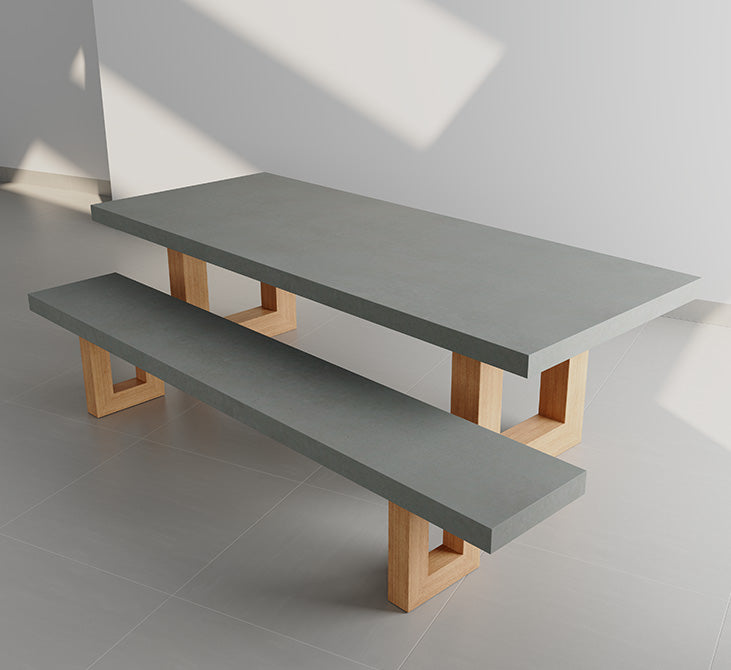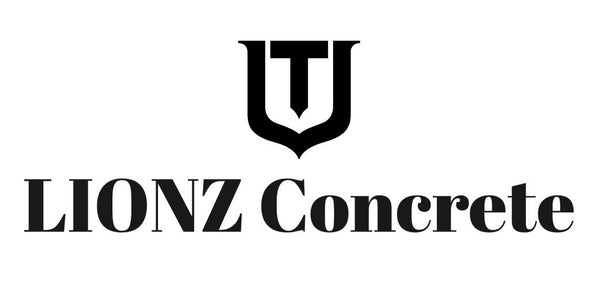What Concrete to Use for Furniture
Share
What Concrete to Use for Furniture: A Comprehensive Guide
Introduction:
Concrete furniture has gained immense popularity in recent years, thanks to its modern aesthetic, durability, and versatility. From sleek countertops to robust tables and stylish benches, concrete can be molded into various forms and designs, making it an excellent choice for contemporary interiors. However, not all concrete is created equal, especially when it comes to crafting furniture. In this blog post, we'll explore the different types of concrete suitable for furniture, their properties, and tips for achieving the best results.

1. Understanding Concrete Types
Concrete is a composite material composed of cement, aggregates (sand, gravel, or crushed stone), and water. For furniture, the type of concrete used can significantly impact the final product's appearance, strength, and longevity. Here are some common types of concrete suitable for furniture:
a. Standard Concrete:
Standard concrete, also known as traditional concrete, is a basic mix of cement, sand, gravel, and water. While it's widely available and relatively inexpensive, it may not always offer the best finish for furniture due to its coarser texture.
b. High-Strength Concrete:
High-strength concrete is designed to provide superior compressive strength and durability. It typically contains a higher proportion of cement and specialized additives to enhance performance. This type of concrete is ideal for furniture that needs to support heavy loads or withstand significant wear and tear.
c. Lightweight Concrete:
Lightweight concrete uses lightweight aggregates such as expanded clay, shale, or slate instead of regular gravel. This reduces the overall weight of the concrete, making it easier to handle and mold into intricate shapes. It's an excellent choice for furniture pieces that need to be moved frequently or installed in locations with weight restrictions.
d. Glass Fiber Reinforced Concrete (GFRC):
GFRC is a specialized type of concrete that incorporates glass fibers to improve tensile strength and reduce the likelihood of cracking. GFRC is particularly popular for furniture because it allows for thinner, more lightweight pieces without compromising strength. It also provides a smooth, polished finish that enhances the aesthetic appeal of the furniture.
2. Key Considerations for Concrete Furniture
When choosing the right concrete for your furniture project, several factors need to be considered to ensure the best outcome:
a. Workability:
Workability refers to how easy the concrete is to mix, pour, and mold. For furniture, a mix with good workability is essential to achieve detailed designs and smooth finishes. Adding plasticizers or superplasticizers can improve workability without compromising the concrete's strength.
b. Finish:
The finish of the concrete can greatly affect the look and feel of the furniture. For a polished, smooth finish, consider using a fine aggregate mix or GFRC. If a more rustic, textured appearance is desired, standard or high-strength concrete with a coarser aggregate may be appropriate.
c. Strength and Durability:
Furniture needs to be sturdy and long-lasting. High-strength concrete and GFRC are excellent choices for pieces that require high durability and resistance to impact and wear.
d. Weight:
The weight of the concrete can be a critical factor, especially for large or movable furniture pieces. Lightweight concrete and GFRC offer significant advantages in this regard, providing strong yet lightweight options.
e. Curing Time:
Proper curing is crucial for concrete furniture to reach its full strength and durability. Allow ample curing time, typically at least 28 days, and consider using curing compounds or sealers to enhance the curing process and protect the surface.
3. Tips for Creating Concrete Furniture
Creating concrete furniture can be a rewarding DIY project or a professional endeavor. Here are some tips to help you get started:
a. Plan and Design:
Carefully plan and design your furniture piece, considering the desired size, shape, and function. Create detailed sketches or models to visualize the final product.
b. Choose the Right Mold:
The mold will determine the shape and finish of your furniture. Use sturdy, well-constructed molds made from materials like wood, metal, or high-quality plastic. Ensure the mold is properly sealed to prevent leaks.
c. Mix Properly:
Follow the manufacturer's instructions for mixing concrete. Use a mechanical mixer for consistent results and add water gradually to achieve the desired consistency.
d. Reinforce as Needed:
Depending on the size and design of your furniture, reinforcement may be necessary. Use steel rebar, wire mesh, or glass fibers to strengthen the concrete and prevent cracking.
e. Finish with Care:
After pouring the concrete, use tools like trowels and floaters to achieve a smooth surface. For polished finishes, consider using polishing pads or sanders once the concrete has cured.
f. Seal and Protect:
Sealing the concrete surface is essential to protect it from stains, moisture, and wear. Choose a high-quality concrete sealer that suits the intended use of the furniture.
Conclusion
Concrete furniture offers a unique blend of style, durability, and versatility. By selecting the right type of concrete and following best practices in mixing, molding, and finishing, you can create stunning and long-lasting furniture pieces that enhance any space. Collaboration with lionzconcrete brand, understanding the nuances of concrete can help you achieve exceptional results in your furniture projects.

